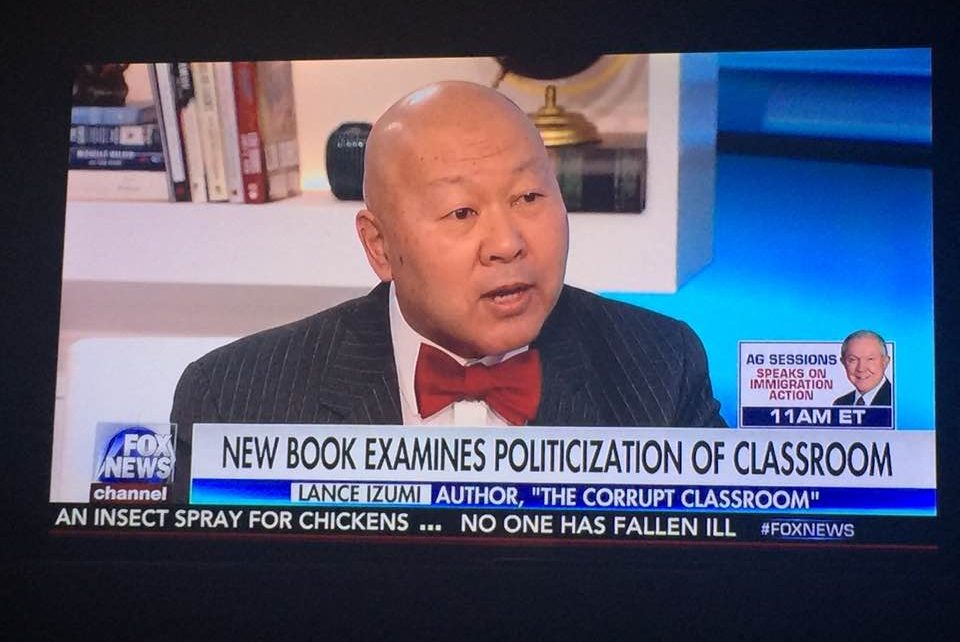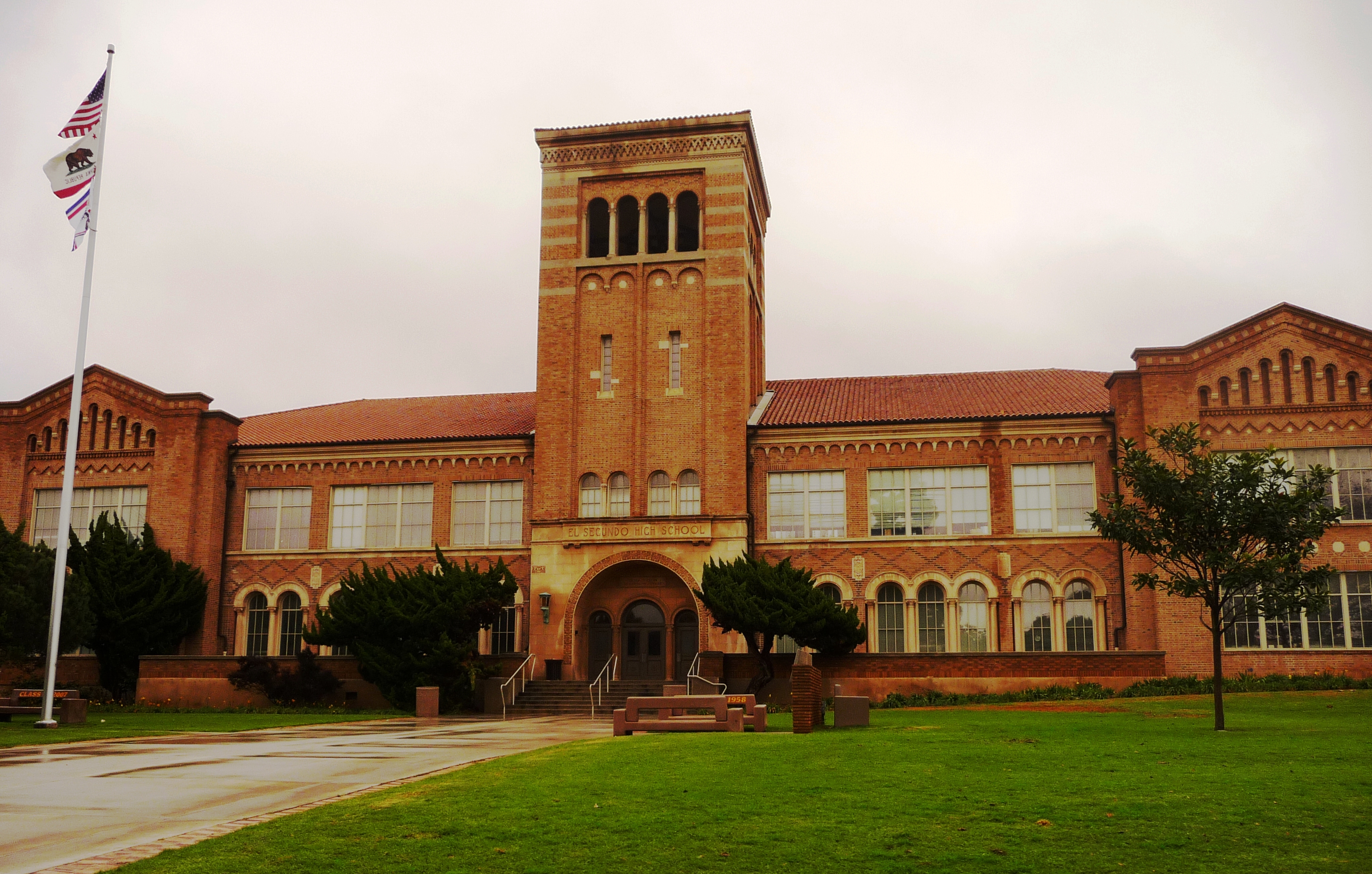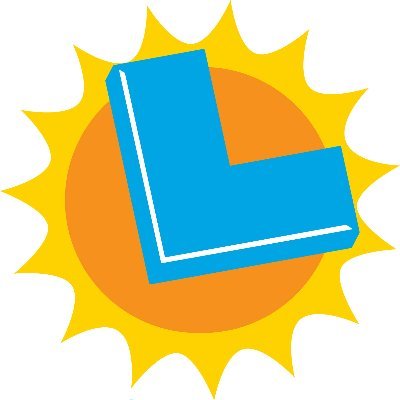
Lance Izumi. (Photo: Katy Grimes, screen capture, Fox News)
California Public Schools: Still Not as Good as You Think
Increased spending hasn’t made a difference in student performance
By Katy Grimes, July 22, 2019 7:39 am
The 60 percent increase in Kindergarten through 12th grade spending in California’s schools, just since 2011 hasn’t made a difference in student performance, California Globe recently reported.
Recently, education scholar Lance Izumi and I had a chance to discuss his 2007 book, “book Not as Good as You Think: Why the Middle Class Needs School Choice, as I filled in for radio talk host Phil Cowan at Sacramento’s 1380AMTheAnswer, KTKZ July 1through July 10. Izumi, senior director of the Center for Education at the Pacific Research Institute and author of the new book Choosing Diversity: How Charter Schools Promote Diverse Learning Models and Meet the Diverse Needs of Parents and Children, joined me in-studio for a fascinating discussion. (July 9)
I worked with Lance Izumi at the Pacific Research Institute, and had many chances to delve deeply into his excellent research. In Not as Good as You Think: Why the Middle Class Needs School Choice, Izumi looked at the performance of California regular public schools that had two-thirds or more of their student populations that were non-low-income, as well as districts in more affluent areas. Izumi has updated his research, and found few changes.
Here is what we discussed, also available at PRI:
“I wanted to see how many of these predominantly non-low-income schools had at least one grade-level where the majority of students failed to perform at the proficient level on California’s state math or English test,” Izumi said.
“Originally, I thought we might find a few dozen schools that met that low-performance benchmark.
However, it turned out that a lot of predominantly non-low-income schools—nearly 300—met that criterion.”
“One school that my research assistant Rachel Chaney and I found was Prospect High School, which is located in the city of Saratoga in Silicon Valley.”
“At the time we did the book, the median home price in the zip code in which the school was located was $1.6 million.
Eight out of 10 of the students at the school were from non-low-income families.”
“Yet, despite these background factors, 55 percent of tenth graders and 54 percent of eleventh graders failed to perform at the proficient level on the state English test.
Worse, 77 percent of students taking the state geometry test failed to score at the proficient level, while 63 percent taking the state algebra 2 exam failed to hit the proficient mark.”
“Even today, after California has changed and lowered its academic standards and instituted a new testing system, more than half of Prospect High students still fail to meet grade-level standards in math.
Overall, years after the publication of our Not as Good as You Think book, many California middle-class students continue to underachieve.”
“On the 2017 National Assessment of Educational Progress eighth-grade math test, a majority of California’s non-low-income students—53 percent—failed to score at the proficient level on the exam.
The results were nearly as bad in reading. On the NAEP eighth-grade reading exam, nearly half of the state’s non-low-income students—49 percent—failed to score at proficiency.
Thus, the regular public school system is continuing to fail not just low-income students, but large numbers of middle-class students as well.”
“The conclusion of my Not as Good as You Think book applies as strongly today as it did a dozen years ago: ‘Middle-class parents in California are now on notice that their schools are coming up short in educating their children. It is up to them to demand [school-choice] options that they can use to escape the trap in which they and their children now find themselves.’”
As for California’s increased public school spending, according to Izumi, the problem is more with former Gov. Jerry Brown’s Local Control funding Formula spending scheme. “According to Ed Voice, CalFacts.org, the per pupil spending is actually over $17,000 per student,” Izumi said. “CalFacts.org source is the Legislative Analyst’s Office. And according to CalFacts.org, California would rank 29th, not 41st,” Izumi said.
Izumi added: “With the LCFF, the money goes down to the school districts but there is no accountability – if the money is going to old failing programs or to new programs. And secondly, most of the money big districts spend is going to pensions and benefits for employees. For LAUSD, the Reason Foundation 2018 Evaluation of LAUSD’s Fiscal Outlook, they calculated that 57 percent of the LCFF is just going to three items – pensions, retiree health benefits, and special education, before one dollar is spent in the classroom.
Izumi is also the author of The Corrupt Classroom: Bias, Indoctrination, Violence and Social Engineering Show Why America Needs School Choice and Short Circuited: The Challenges Facing the Online Learning Revolution in California.





California needs to spend $17K to pay for the teachers’ pension – Corruption-r-California